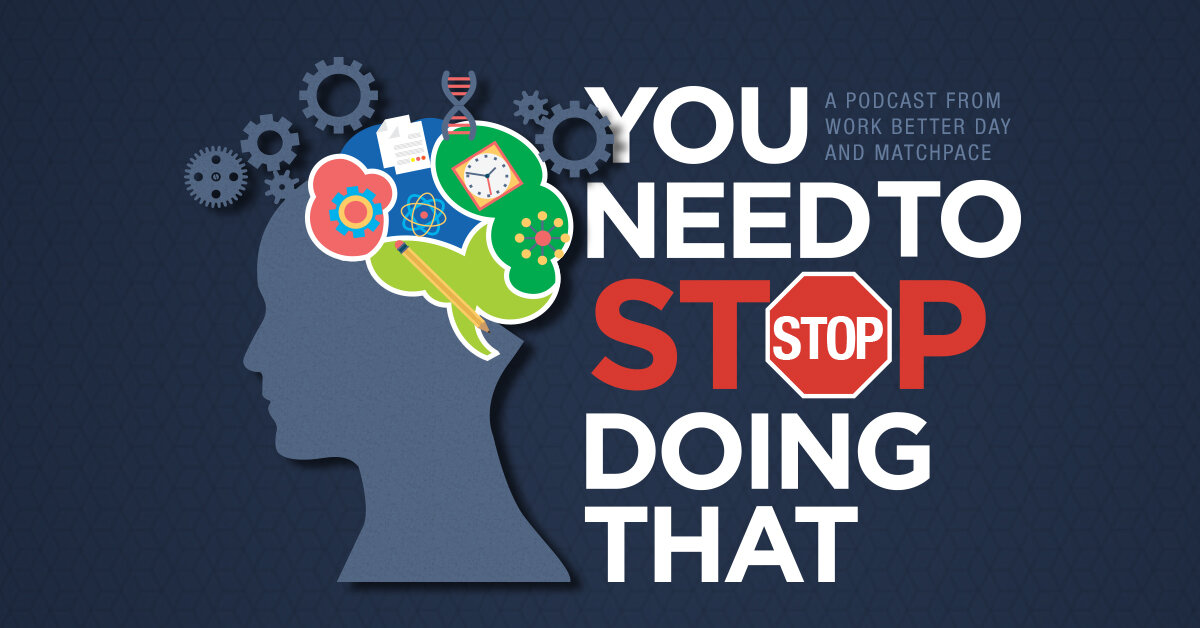
Blog
If You're Feeling Burned Out, Here's Why.
It might seem too early in the year to talk about burnout, but the reality is overwork, overwhelm and burnout don’t follow an annual calendar. In fact, the pressures of a new set of goals can drive us even further into the habits that contribute to our growing overwhelm at work.
What’s worse, we often don’t recognize the signs of pending burnout until it’s too late. That leads talented, hard-working employees to throw in the towel or risk fallout from unsustainable workloads and workplace structures - with our health and relationships taking the brunt of our collapse.
We recently talked about the important balance between work and leisure, and how as an American workforce we’ve overemphasized work at the expense of deeply important, restorative leisure time. We’re going to dive deeper into the idea of leisure and what it really means to take a break, but we won’t feel truly motivated to trade working hours for rest and relaxation if we don’t face our burnout epidemic head-on. It’s important to understand exactly what burnout is, how it happens, and the warning signs so we can stop it before our health, relationships and yes, our work, suffers.
You Need To Stop Doing That
How many decisions will you make today?
It may seem overwhelming, but you will in fact make thousands of decisions today, from what to wear or have for breakfast, to which route to take on your commute, to how and when to tackle tasks at work. Many days we face even bigger decisions, whether they be financial, relational, or when to quit (or take a new) job.
Simply step inside a grocery store or look at a restaurant menu and bam! - hundreds of decisions, right in front of you!
In our modern age, we face more decisions than ever before. We may be tempted to face these decisions by adding more to our lives: more relationships, more technology hacks, more responsibilities. And that can quickly lead to decision burnout.
Saying “no” is a lost art when we’re faced with so many opportunities to add to our lives every day. But knowing what we need to STOP doing is even more important. That’s why we’ve launched the You Need To Stop Doing That Podcast in partnership with OPX and Work Better Day.
Is It Time For You To Get Away?
We’re bringing you something a bit different this month: a review of the recently released How To Get Away: Finding Balance In Our Overworked, Overcrowded, Always-On World by Jon Staff and Pete Davis, founders of Getaway. We interviewed Pete to kick off our new podcast, You Need To Stop Doing That, so go take a listen and then pick up Pete and Jon’s book if you like what you hear. We did!
Pete and Jon launched their tiny house rental company, Getaway, in 2015 after meeting during grad school at Harvard. Inspired by Jon’s childhood in Northern Minnesota and a desire to truly disconnect from the hustle of an always-on world, they created a new kind of vacation rental company: one where you lock your phone away and hole up in an 8 foot by 20 foot cabin in the woods. Turns out they weren’t the only ones who wanted to get away: they now have a 90% occupancy rate year-round in over 80 tiny houses outside of Boston, New York and D.C.
Tiny houses in the woods aren’t just a marketing gimmick. Millions of American workers are stuck in an endless cycle of “work hard, play hard” (but mostly just work hard) and are starving for a true break. And as we talk about often at MatchPace, it’s time for us to reimagine our workday to restore balance to our lives, not just add more hustle. Pete, Jon and the Getaway team agree.
Five Steps To Work Hard And Live Well In 2019
With the start of the new year, we’re revisiting some of the basic tenets of MatchPace and reminding ourselves not just why it’s important to optimize your pace at work - but also simple steps we can all take today to get closer to achieving our goal of working hard and living well.
When MatchPace launched in 2016, we wanted to help people work better so they can important, world-changing work without burning out and sacrificing their other priorities, like family, health, and giving back to their communities. From individuals to large organizations, we’re learning how to do that better.
If you’ve started 2019 in the same old rhythms and routines, spending most of your day switching from task to task or hopping from meeting to meeting, tired and overwhelmed but unsure of what you’ve accomplished by the end of the day, you’re not alone. Fortunately, taking just one of the five following steps can start transforming your work day and make you more effective today.
Do You Need Some Boundary Enforcement?
The holidays! A season marked by traditions, celebration, and time spent with family and friends. I eagerly anticipate it every year, and yet the start of December always gives me a bit of anticipatory overwhelm, too.
So many gifts, so many social engagements, a splash of end-of-year reporting and business meetings, and a few family traditions that may not really hit the mark. If I’m not careful, I can end December exhausted. And as I’m continually learning, the best cure for holiday burnout?
Boundaries.
Reflecting on these feelings of overwhelm, I’ve realized a parallel between the holiday season and my own work life: a lack of boundaries, or more truly, a lack of boundary enforcement.
Is MatchPace All It's Cracked Up To Be?
MatchPace officially launched over a year ago, and we’ve had some great success working with organizations and individuals to optimize their pace at work so they can both work hard and live well. But for many people, the idea of creating a work environment that encourages focus and effectiveness so you can do important, meaningful work and achieve a healthy work-life integration sounds like a pipe dream.
We get it. If you’re one of those hanging in there with us but silently thinking “MatchPace isn’t all it’s cracked up to be,” you’re not alone!
I’ve heard that exact sentiment, or some version of it, quite a few times. Many people think MatchPace is a reasonable idea, and have tried some variation of it, but found it just didn’t work.
Do I Really Need To Track My Time? Demystifying Time Tracking
Gone are the days of the old pen-and-paper timesheet. We no longer work strict 9-to-5s, and many of us juggle side hustles or run our own businesses where keeping track of our time on the clock means getting paid our due. But even if you are a salaried worker in an office setting, understanding how you spend your time (which translates to your attention, which demonstrates your priorities) is one of the keys to unlocking productivity, cutting back on wasted minutes (or full hours), and walking away at the end of the day confident you achieved your goals.
Not only are there great, affordable tools to help you keep track of billable hours or sort through time spent on different work-related tasks (business development, client meetings, deep work), but after a few weeks or months of tracking your time you will start to see trends in how you spend your time, what you might be wasting your time on, and which hours of the day you do your best work.
But isn’t tracking my time more work than it’s worth?
This is probably the biggest hangup we all have about time tracking: it takes effort, and it can be tough to see the payoff, especially in the short run. But tracking your time is worth so much more than making sure you capture all those billable hours (or aren’t overworking yourself without realizing it).
How Planning A Vacation Can Make You More Productive
Summer is here!
How do those words make you feel? Giddy with excitement over big summer plans and a chance to relax? Or stressed out knowing that you’re behind at work and it’ll be even harder to catch up now that colleagues and clients are on “summer time”?
Or maybe you’d love to take a vacation - a real, no-smartphone, relax-on-the-beach vacation - but you’re afraid you’ll fall behind at work or end up looking less committed to your job than you coworkers.
Over half of Americans feel that way, with studies showing 55 percent don’t ever use their vacation time.
But what if taking that vacation actually made you more productive?
What Does Memorial Day Have To Do With Work?
With summer right around the corner, it’s easy for many of us to think of Memorial Day as a kickoff to the season of BBQs, baseball and fireworks. While spending time with friends and family over your favorite warm-weather activities is meaningful, is there more to Memorial Day than that?
Whether you’re planning for a three-day weekend or will be showing up at the office the morning of Memorial Day, this is the perfect time to reflect on what Memorial Day means and how it affects our workplaces.
You may have noticed we’re passionate about growing and honoring diversity in the workplace, not for its own sake or because it’s the right thing to do (though it is), but because it gives your team the opportunity to learn from differing perspectives and ultimately arrive at the best decisions, directly impacting your bottom line. We’ve talked about moms and honored Black History Month and International Women’s Day, but what about those who have died for our country?
The Decision To Work Or Stay Home Should Belong To Moms—Not Their Employers
For years, there has been talk about the opt-out revolution where women who are well-situated in their careers voluntarily stepped back to raise families. What much of the conversation overlooked, however, is that the decision for many is more about feeling forced out.
According to a survey of nearly 1,500 women for the book Work PAUSE Thrive, only 11% of women planned to step back from work when they became mothers. But 72% actually did. Author Lisen Sromberg concludes, “Something had forced these women out of the workforce.”
That was the reality for Amy Mason, a mother from Washington D.C., who worked on labor compliance and living wage issues for more than a decade.
“I was the first person at my organization to take multiple maternity leaves, and the first person to ask for a flexible schedule,” Mason tells Motherly. “They gave it to me, but I felt like I was asking for ‘leniency.’ I remained on the senior leadership team, but was no longer in the inner circle.”
Feeling squeezed out, Mason recently stepped out of the workforce altogether. She says, “Finally I came to the conclusion that it had to be a full-time job, you had to be all in. And I couldn’t do that.”
The statistics show she’s far from alone—with many women leaving the jobs they love for less desirable jobs that offer more flexibility and others halting their careers entirely.










